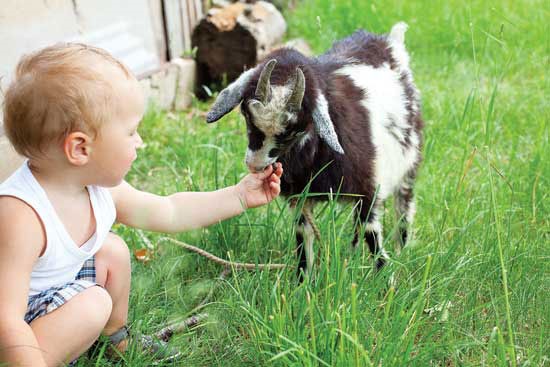News
March 16, 2016
By Nuritas
How Bacterial Exposure During Pregnancy Could Protect Against the Development of Allergies

Author: Niamh Mohan
Recent reports have revealed that the prevalence of allergies is rapidly increasing worldwide affecting a staggering 150 million people in the EU, of which 8-10% are children [1]. The quality of life for those with persistent allergies can be greatly limited by not only the constant anxiety of asthma attacks, but also fear of anaphylactic shock and other related reactions. The increased numbers of infants suffering from allergies points towards sensitisation arising in the womb during pregnancy. This impacts the new-born’s immune function and contributes to the development of allergic diseases in utero.
So what is an allergy? It is a reaction by the body to an environmental trigger which is usually harmless like pollen, animal dander and food. Our immune systems are mainly mediated by cytokines. These are messenger molecules that communicate between cells in immune responses and stimulate the movement of cells towards sites of inflammation, infection and trauma. Th-1 type cytokines are important in allergies as they are responsible for pro-inflammatory functions. Conversely, Th-2 type cytokines provoke anti-inflammatory reactions and produce Immunoglobulin E (IgE), an antibody which attacks allergens [2]. During an allergic response the levels of Th-2 cytokines heavily outweigh the Th-1 type. IgE binds to the allergen and stimulates the release of histamine and pro-inflammatory compounds from sensitised cells resulting in allergic symptoms such as swelling, itching and wheezing [3]. Both cytokine types should reciprocally regulate each other however pregnancy naturally evokes a Th-2 type environment [4]. This can predispose infants to a strong Th-2 type, and weak Th-1 type system at birth which could add to the development of allergies in genetically susceptible infants when they come in contact with environmental triggers [2].

The ‘hygiene hypothesis’, which was first proposed in 1989, suggests that industrialisation, poor diets and increased dependency on disinfectants and antibiotics in developed countries has reduced exposure to infectious and symbiotic bacterial populations and in doing so, has suppressed the innate immune system which has contributed to an epidemic in allergic and immune related diseases [5].
Various papers support the hygiene hypothesis and propose that antenatal exposure to a diverse range of non-pathogenic bacteria could stabilise the balance of pro- and anti-inflammatory responses in neonates [6]. Clinical trials identified that mothers who were regularly exposed to farm settings throughout their pregnancy gave birth to children with stronger immune systems and suffered less allergies than the those who with no farm exposure [7] . Similarly, a research group who extracted Acinetobacter lwoffii from soil and tested its ability to exert immune-promoting effects when supplemented in the feed of pregnant mice concluded that the microbe was shown to stabilise pro- and anti-inflammatory responses in the offspring [8]. There are various conflicting studies regarding the use of probiotic supplements during pregnancy, however, with further research this type of strain specific microbial supplementation and microbial exposure for pregnant mothers may offer a natural method of allergy reduction and even prevention for their offspring..

Ultimately, the uterine settings and prenatal exposures largely impact foetal immunity, however so does the method of birth. A recent Nature Medicine paper highlighted an experimental stage post caesarean delivery procedure which involves swabbing new-borns with gauze doused in the mother’s vaginal bacteria. The paper explains how “C section” babies are at a higher risk of developing allergies and have vastly different skin and gut microbiomes than vaginally born babies. While this paper has caused some controversy and has been labelled an “unsettled science” with “unclear long-term health effects”, these may in fact be overcautious comments disregarding that this bacterial coating is an integral part of the natural method of birth [9]. Tolerisation to known allergens before conception will enhance the synthesis of suppressor T lymphocytes in the woman’s system and subdue IgE cytokine production. The healthy immune status of the mother will likely resonate in her baby who will thus have a lower risk of attaining allergies. Neonatal immunologic protection is often retained throughout early childhood and into adult life.
Nuritas understand the body’s immune responses as many antimicrobial peptides are released as a defence mechanism to naturally protect us against pathogens. Our environment is teaming with micro-organisms, both good and bad. Modern disinfectants and antiseptics usually wipe out everything, and the vicious cycle of allergies and poor immune systems as described by the hygiene hypothesis unfolds. We believe that by mimicking nature and releasing natural antimicrobial compounds we can ward off the “bad bacteria” and let the good ones thrive to enhance our natural immunity.
References:
[1] E. A. of A. and C. I. EAACI, “Allergen Statistics Report,” EAACI report, 2014. [Online]. Available: http://www.eaaci2014.com/.
[2] A. Berger, “Th1 and Th2 responces- What are they?,” Sci. Comment., vol. 321, no. 7258, pp. 424–425, 2000.
[3] A. and A. F. of A. AAFA, “IgE and its role in allergic asthma,” Asthma factsheet, 2004. [Online]. Available: http://www.aafa.org/page/allergic-asthma.aspx.
[4] K. Kramer, “Maintaining Health by Balancing Microbial Exposure and Prevention of Infection: the Hygiene Hypothesis versus the Hypothesis of Early Immune Challenge.”,” J. Hosp. Infect., vol. 83, no. 51, pp. 70–76, 2013.
[5] D. Strachan, “Hay fever, Hygiene and the Household,” Biomed. J., vol. 229, pp. 1259–1260, 1989.
[6] P. Amoudruz, U. Holmlund, V. Malmström, C. Trollmo, K. Bremme, A. Scheynius, and E. Sverremark-Ekström, “Neonatal immune responses to microbial stimuli: is there an influence of maternal allergy?,” J. Allergy Clin. Immunol., vol. 115, no. 6, pp. 1304–10, Jun. 2005.
[7] M. Ege, C. Bieli, and R. Frei, “Prenatal farm exposure is related to the expression of receptors of the innate immunity and atopic sensitization in school-age children,” J. allergy Clin. Immunol., vol. 117, pp. 817–823, 2006.
[8] S. L. Prescott, “Allergic disease: understanding how in utero events set the scene.,” Proc. Nutr. Soc., vol. 69, no. 3, pp. 366–72, Aug. 2010.
[9] K. Dominguez-Bello, MG Laboy, N. Shen, L. Cox, A. Amir, A. Gonzalez, N. Bokulich, S. Song, M. Hoashi, J. Rivera-Vinas, K. Mendez, R. Knight, and J. Clemente, “Partial restoration of the microbiota of cesarean-born infants via vaginal microbial transfer,” Nat. Med., 2016





 Previous
Previous
